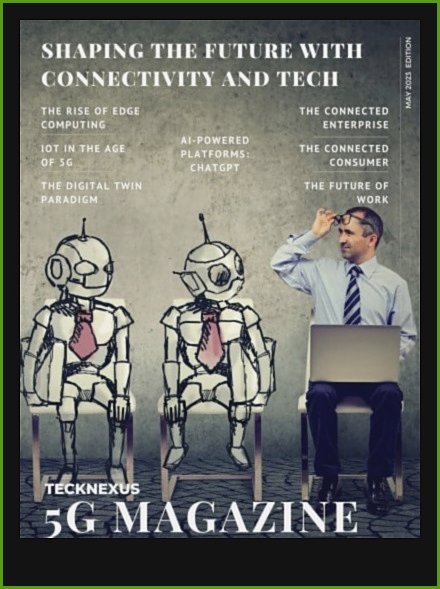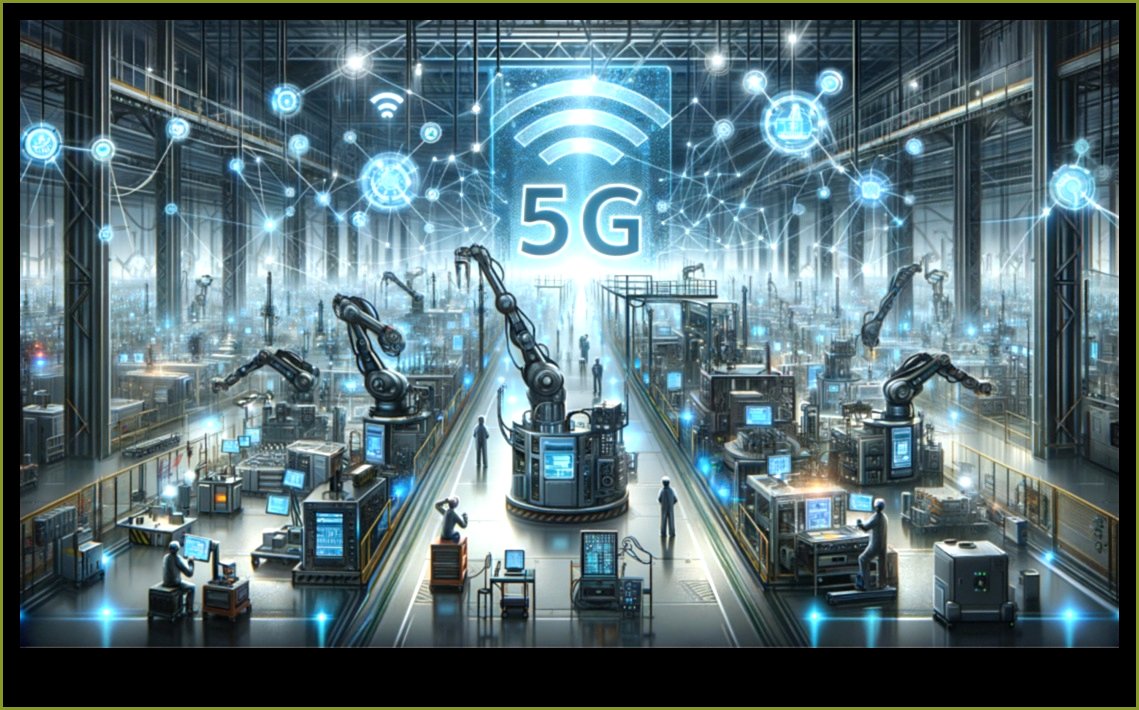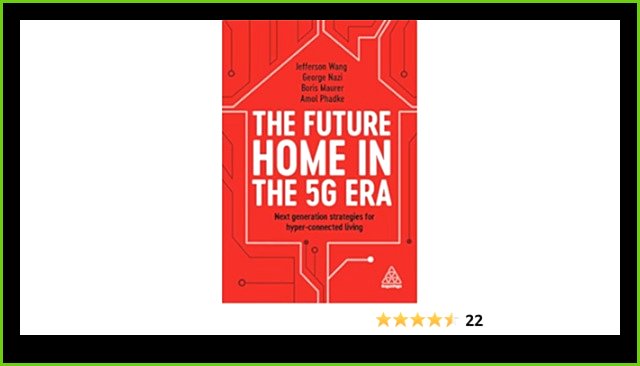
5G Chronicles: Stories of Mastery in Crafting Connected Experiences
5G Chronicles is a book that tells the stories of people who have mastered the art of crafting connected experiences. The book is divided into ten chapters, each of which focuses on a different aspect of 5G.
The first chapter introduces 5G and discusses its benefits and uses. The second chapter explores the infrastructure needed to support 5G networks. The third chapter discusses the security challenges of 5G networks. The fourth chapter looks at the future of 5G and how it will impact our lives.
The remaining chapters of the book focus on specific industries that are being transformed by 5G. These industries include healthcare, manufacturing, transportation, and retail. The book concludes with a discussion of the challenges and opportunities that 5G presents.
5G Chronicles is a valuable resource for anyone who wants to learn more about the future of 5G. The book is full of insights from experts in the field, and it provides a comprehensive overview of the technology.
If you are interested in learning more about 5G, I encourage you to read 5G Chronicles.
| Topic | Answer |
|---|---|
| 5G | 5G is the fifth generation of wireless technology. It promises to deliver much faster speeds, lower latency, and greater capacity than previous generations of wireless technology. |
| Connected experiences | Connected experiences are experiences that are enhanced by the use of technology. For example, a connected experience could be watching a movie on a streaming service while using a virtual reality headset to interact with the movie. |
| Crafting | Crafting is the process of creating something by hand. In the context of connected experiences, crafting refers to the process of creating experiences that are both engaging and innovative. |
| Mastery | Mastery is the state of being proficient in a particular skill or area of knowledge. In the context of connected experiences, mastery refers to the ability to create experiences that are both engaging and innovative. |
| Stories | Stories are a powerful way to communicate ideas and emotions. In the context of connected experiences, stories can be used to engage users and create memorable experiences. |

II. Benefits of 5G
5G is the fifth generation of wireless technology, and it promises to deliver a number of benefits over previous generations of wireless technology. These benefits include:
- Faster speeds: 5G is expected to offer peak speeds of up to 10 gigabits per second (Gbps), which is 100 times faster than the average 4G speed of 100 megabits per second (Mbps).
- Lower latency: 5G will also have much lower latency, which is the time it takes for a data packet to travel from one point to another. This will make 5G ideal for applications that require real-time communication, such as self-driving cars and virtual reality.
- Greater capacity: 5G will also have much greater capacity than previous generations of wireless technology, which will allow more devices to connect to the network at the same time. This will be essential for applications such as the Internet of Things (IoT), which is expected to connect billions of devices to the internet.
III. Uses of 5G
5G is expected to have a wide range of uses, including:
- Enhanced mobile broadband (eMBB): This will provide faster speeds and lower latency for mobile devices, allowing for more demanding applications such as streaming high-definition video and gaming.
- Massive machine-type communications (mMTC): This will enable a large number of devices to connect to the network and exchange data, such as sensors in industrial settings or connected cars.
- Ultra-reliable low-latency communications (URLLC): This will provide guaranteed network performance for applications that require very low latency, such as self-driving cars or remote surgery.
IV. 5G infrastructure
5G infrastructure is the physical network that supports 5G services. It includes the following components:
- Base stations
- Radio access networks (RANs)
- Core networks
- Backhaul networks
Base stations are the physical devices that transmit and receive 5G signals. They are typically located on rooftops or towers and are connected to the RANs. The RANs are responsible for routing traffic between the base stations and the core networks. The core networks are responsible for providing the services that users access on their devices, such as voice, data, and video. The backhaul networks are responsible for connecting the core networks to the rest of the internet.
5G infrastructure is a complex and expensive undertaking. However, it is essential for the delivery of 5G services. As 5G adoption grows, so too will the need for 5G infrastructure.

V. 5G security
5G security is a critical concern for businesses and governments alike. The high speeds and low latency of 5G make it a prime target for cyberattacks.
There are a number of security risks associated with 5G, including:
- Denial-of-service attacks
- Man-in-the-middle attacks
- Spoofing attacks
- Malware attacks
- Data breaches
To mitigate these risks, 5G networks must be designed with security in mind. This includes using strong encryption, implementing robust authentication mechanisms, and keeping software up to date.
Governments and businesses are also working to develop new security standards for 5G networks. These standards will help to ensure that 5G networks are secure from a wide range of threats.
Despite the risks, 5G security is not insurmountable. By taking the necessary precautions, businesses and governments can protect themselves from the most serious threats.

VI. 5G challenges
5G is a new technology, and there are still some challenges that need to be addressed before it can be widely adopted. These challenges include:
- Spectrum availability: 5G requires a lot of spectrum, and there is not enough available spectrum to meet the demand. This is a major challenge that needs to be addressed before 5G can be widely adopted.
- Network latency: 5G promises very low latency, but it is still not clear whether this can be achieved in practice. Network latency is a major factor in many applications, such as self-driving cars and virtual reality, so it is important that 5G can deliver on its promise of low latency.
- Security: 5G networks are more complex than previous generations of networks, and this makes them more vulnerable to security attacks. It is important that 5G networks are secure from the start, in order to protect users from data breaches and other security threats.
- Cost: 5G networks are more expensive to build and operate than previous generations of networks. This is a major challenge for operators, who need to find ways to recoup their investment in 5G.
These are just some of the challenges that need to be addressed before 5G can be widely adopted. However, the potential benefits of 5G are so great that it is likely that these challenges will eventually be overcome.

VII. 5G timeline
The development of 5G technology has been a long and complex process, with many different standards and technologies being developed over the years. The following is a timeline of some of the key milestones in the development of 5G:
- 2008: The first 5G research projects are initiated in Europe and South Korea.
- 2011: The first 5G standards are published by the 3rd Generation Partnership Project (3GPP).
- 2014: The first 5G commercial networks are launched in South Korea and Japan.
- 2018: The first 5G networks are launched in the United States, China, and Europe.
- 2020: 5G is widely available in most major cities around the world.
- 2023: 5G is expected to account for more than 20% of global mobile traffic.
- 2027: 5G is expected to be the dominant mobile technology worldwide.
As 5G technology continues to develop, it is expected to have a major impact on our lives and businesses. 5G will enable faster speeds, lower latency, and greater capacity than previous generations of wireless technology. This will open up new possibilities for mobile gaming, streaming video, and other applications. 5G will also be used to power new technologies such as self-driving cars and smart cities.
5G cost
The cost of 5G is a major concern for many businesses and individuals. There are a number of factors that contribute to the cost of 5G, including the cost of the equipment, the cost of the network, and the cost of the data.
The cost of the equipment can vary depending on the type of device that is being used. For example, a 5G smartphone will typically cost more than a 4G smartphone. The cost of the network can also vary depending on the size and complexity of the network. A large, nationwide network will cost more to build and maintain than a small, local network.
The cost of the data can also vary depending on the type of data that is being used. For example, streaming video will typically cost more than sending text messages.
Overall, the cost of 5G is likely to be higher than the cost of 4G. However, the benefits of 5G, such as faster speeds and lower latency, may make it worth the investment for businesses and individuals who need the latest and greatest technology.
IX. 5G adoption
5G adoption is still in its early stages, but it is growing rapidly. In 2021, there were an estimated 190 million 5G subscriptions worldwide. This number is expected to grow to 560 million subscriptions by 2022 and 2.9 billion subscriptions by 2025.
The factors driving 5G adoption include the increasing demand for high-speed data, the growing number of 5G-enabled devices, and the rollout of 5G networks by major carriers.
5G is expected to have a significant impact on a wide range of industries, including healthcare, manufacturing, transportation, and retail. It is also expected to play a key role in the development of new technologies such as autonomous vehicles and virtual reality.
The following are some of the key benefits of 5G adoption:
- Increased speed: 5G networks can provide download speeds of up to 10 gigabits per second, which is significantly faster than 4G networks. This increased speed will allow users to download large files, stream high-definition video, and play online games with minimal lag.
- Lower latency: 5G networks have lower latency than 4G networks, which means that data packets can be transmitted more quickly. This reduced latency will make it possible for users to interact with real-time applications such as self-driving cars and virtual reality.
- Greater capacity: 5G networks have greater capacity than 4G networks, which means that they can support more devices and users. This increased capacity will be essential for supporting the growing number of connected devices in the world.
5G adoption is still in its early stages, but it is expected to have a major impact on a wide range of industries. The following are some of the key areas where 5G is expected to have a significant impact:
- Healthcare: 5G can be used to improve patient care by providing real-time access to medical data, enabling remote surgery, and supporting the development of new medical devices.
- Manufacturing: 5G can be used to improve productivity in manufacturing by connecting machines and sensors, automating processes, and providing real-time feedback.
- Transportation: 5G can be used to improve transportation safety and efficiency by enabling self-driving cars, connected vehicles, and traffic management systems.
- Retail: 5G can be used to improve the customer experience by providing real-time inventory updates, personalized recommendations, and interactive displays.
5G is a new and emerging technology with the potential to revolutionize a wide range of industries. As 5G networks continue to roll out, we can expect to see even more innovative and exciting applications for this technology.
X. FAQ
Here are three common questions about 5G and their answers:
1. What is 5G?
5G is the fifth generation of wireless technology. It promises to deliver much faster speeds, lower latency, and greater capacity than previous generations of wireless technology.
2. What are the benefits of 5G?
5G has a number of potential benefits, including:
- Faster speeds: 5G can deliver speeds of up to 10 gigabits per second, which is 100 times faster than the average 4G speed.
- Lower latency: 5G has a latency of less than 1 millisecond, which is much lower than the latency of 4G. This means that 5G can be used for applications that require real-time communication, such as self-driving cars and virtual reality.
- Greater capacity: 5G can support a much greater number of devices than previous generations of wireless technology. This means that 5G can be used to connect more devices to the internet, such as smartphones, tablets, and laptops.
3. What are the challenges of 5G?
5G also has a number of challenges, including:
- Cost: 5G is more expensive to deploy than previous generations of wireless technology.
- Security: 5G networks are more vulnerable to cyberattacks than previous generations of wireless networks.
- Spectrum: There is not enough spectrum available to support all of the devices that want to connect to 5G networks.